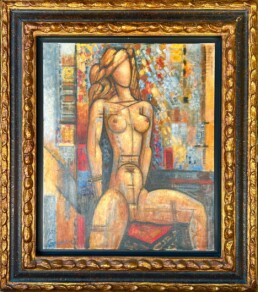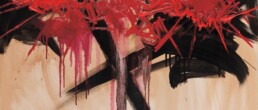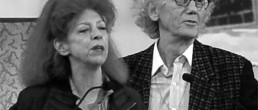Pierre-César Lagage
1911–1977 (France)
Biography
Pierre-César Lagage, born in 1911 in Croix (Nord) and died in 1977, was a French painter whose work was part of the evolution of post-war geometric abstraction. At the crossroads of constructive rigor and coloristic sensitivity, Lagage built a deeply coherent body of work that is at once silent, luminous, and structured.
A classical education and Parisian roots
Trained at the École des Beaux-Arts in Roubaix, Pierre-César Lagage moved to Montmartre in the 1930s, where he opened his studio and developed a body of work influenced by the French pictorial tradition, while observing with interest the developments in modern art. From the 1940s onwards, he exhibited regularly in Paris, Lille, Brussels, Zurich, Copenhagen, Warsaw, and Los Angeles.
From structured figuration to abstraction
Lagage’s artistic career can be divided into several stages: after figurative beginnings marked by a certain formal rigor, he gradually shifted his work toward geometric abstraction, where forms, volumes, and colors are subject to an almost architectural balance. From the 1950s onwards, he underwent a real turning point: he embarked on a radical geometric abstraction, asserting a style of painting based on structure, space, and rhythm.
Exhibitions and recognition
Throughout his career, Pierre-César Lagage participated in numerous exhibitions, both in France and abroad. His work has been the subject of several retrospectives, notably at the Musée d’Art et d’Industrie in Roubaix, the Musée Matisse in Le Cateau-Cambrésis, the Musée du Touquet, the Musée de Cambrai, and the Musée du Luxembourg (Paris, Senate). He received the Lissone Prize in 1957, demonstrating the recognition of his work on a European scale.
Pierre-César Lagage at the Hurtebize Gallery
The Hurtebize Gallery, which specializes in the great names of post-war abstraction, highlights the work of Pierre-César Lagage through a selection of emblematic works from his abstract period. The gallery thus wishes to pay tribute to a discreet but essential artist, whose painting continues to engage in a meaningful and modern dialogue.






